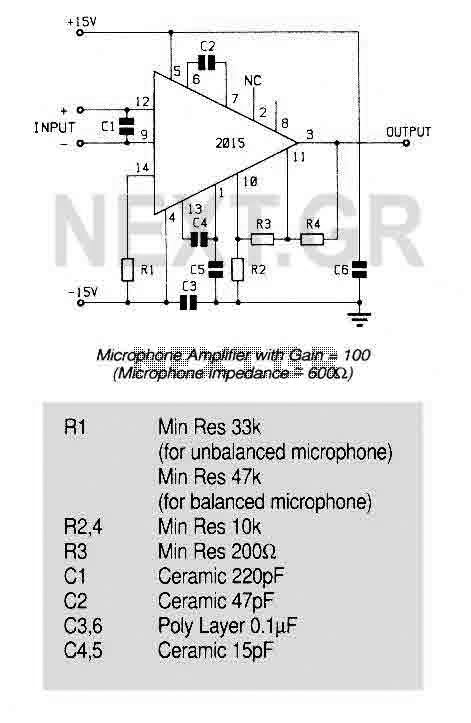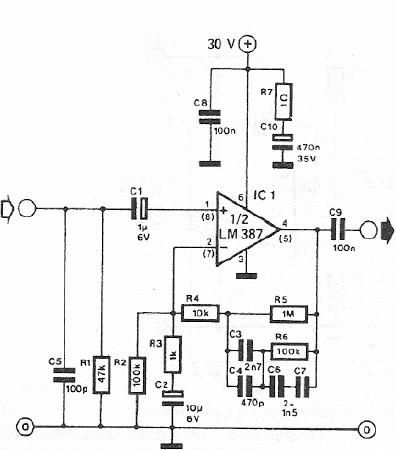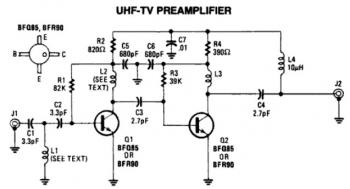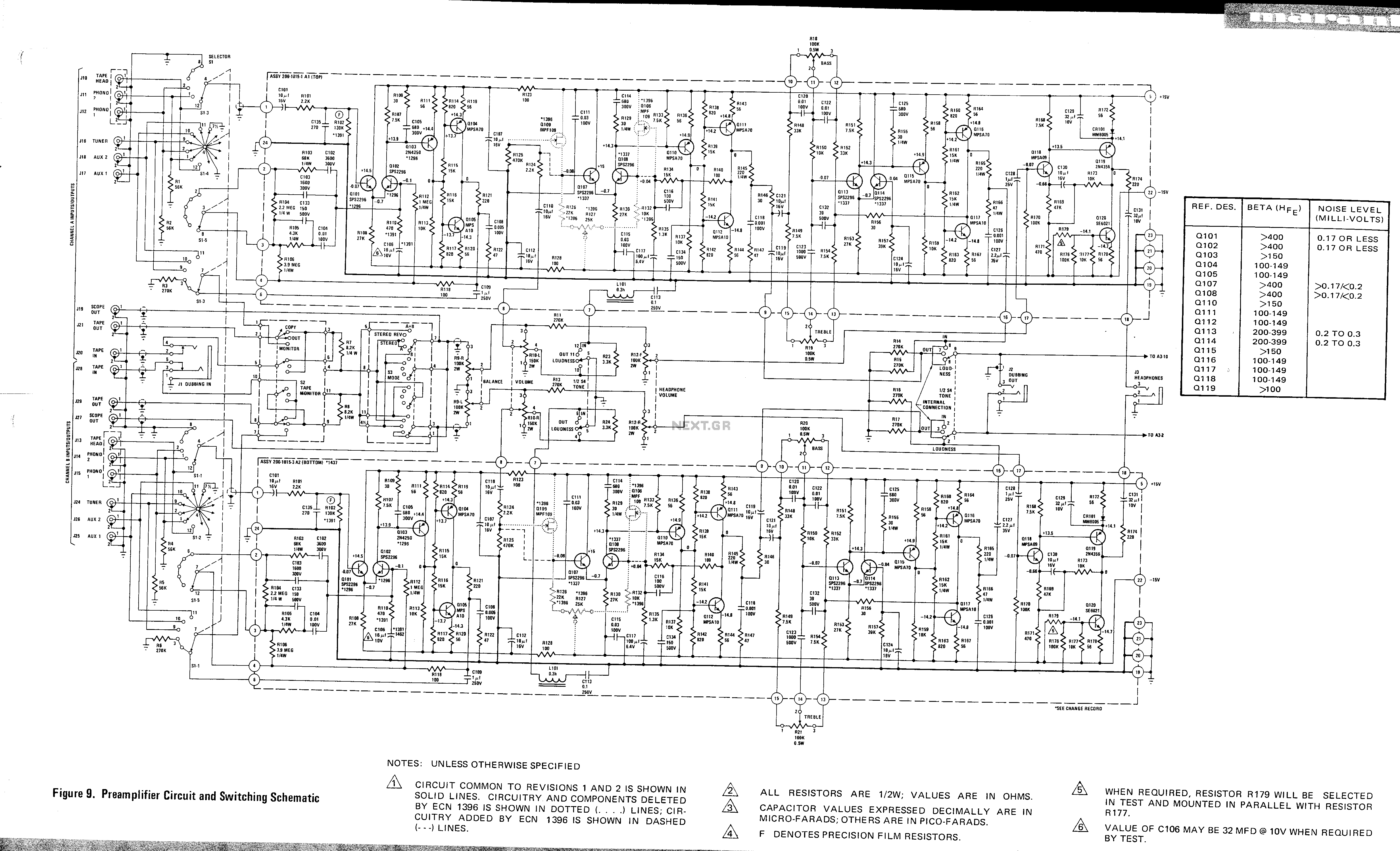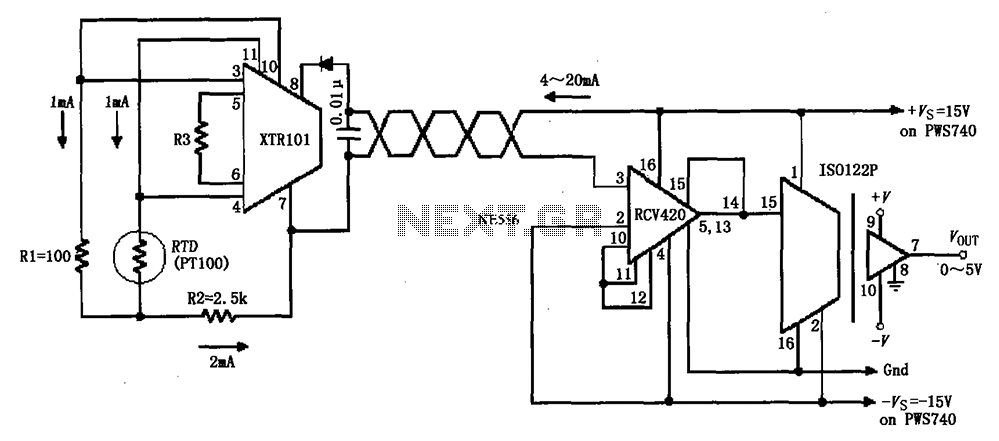
Medical instrument preamplifier
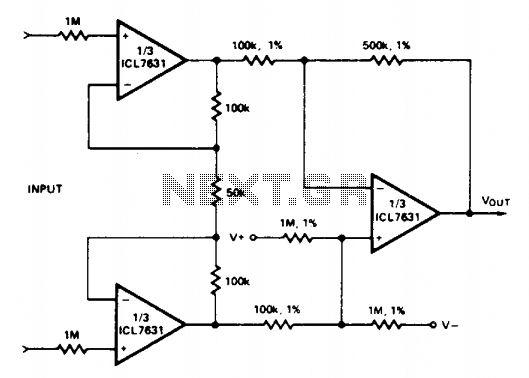
Input current (from sensors connected to the patient) is limited to less than 5 µA under fault conditions. Note that Avol = 25 single Ni-cad battery operation.
The circuit is designed to ensure that the input current from patient-connected sensors remains below 5 µA during fault conditions, thereby enhancing patient safety and preventing potential damage to sensitive components. This limitation is critical in medical applications, where accurate readings and patient protection are paramount.
The operational amplifier (Avol) specified to operate with a single Ni-cad battery has a gain of 25, which indicates that the amplifier is configured to boost low-level signals from the sensors effectively. The use of a single Ni-cad battery suggests that the circuit is optimized for low power consumption, making it suitable for portable medical devices.
In this configuration, the input stage of the circuit may include current-limiting resistors or active components designed to monitor and regulate the input current. This ensures that under normal operating conditions, the sensors can function correctly while maintaining the specified current threshold during fault scenarios.
The feedback loop of the operational amplifier will be designed to maintain stability and prevent oscillations, which could otherwise lead to erroneous readings or unsafe conditions. Capacitors may be included in the feedback path to filter out noise and stabilize the output, ensuring that the amplified signal remains clean and reliable.
Power management is also a crucial aspect of this design, given the reliance on a single Ni-cad battery. The circuit may incorporate low-dropout regulators (LDOs) or other power management techniques to ensure that the operational amplifier receives a stable voltage supply, thus maximizing the efficiency and longevity of the battery.
Overall, this circuit design prioritizes safety, reliability, and efficiency, making it suitable for medical applications that require precise monitoring of patient conditions. Input current (from sensors connected to the patient) is limited to less than 5 µ under fault conditions. Note that Avol = 25 single Ni-cad battery operation.
The circuit is designed to ensure that the input current from patient-connected sensors remains below 5 µA during fault conditions, thereby enhancing patient safety and preventing potential damage to sensitive components. This limitation is critical in medical applications, where accurate readings and patient protection are paramount.
The operational amplifier (Avol) specified to operate with a single Ni-cad battery has a gain of 25, which indicates that the amplifier is configured to boost low-level signals from the sensors effectively. The use of a single Ni-cad battery suggests that the circuit is optimized for low power consumption, making it suitable for portable medical devices.
In this configuration, the input stage of the circuit may include current-limiting resistors or active components designed to monitor and regulate the input current. This ensures that under normal operating conditions, the sensors can function correctly while maintaining the specified current threshold during fault scenarios.
The feedback loop of the operational amplifier will be designed to maintain stability and prevent oscillations, which could otherwise lead to erroneous readings or unsafe conditions. Capacitors may be included in the feedback path to filter out noise and stabilize the output, ensuring that the amplified signal remains clean and reliable.
Power management is also a crucial aspect of this design, given the reliance on a single Ni-cad battery. The circuit may incorporate low-dropout regulators (LDOs) or other power management techniques to ensure that the operational amplifier receives a stable voltage supply, thus maximizing the efficiency and longevity of the battery.
Overall, this circuit design prioritizes safety, reliability, and efficiency, making it suitable for medical applications that require precise monitoring of patient conditions. Input current (from sensors connected to the patient) is limited to less than 5 µ under fault conditions. Note that Avol = 25 single Ni-cad battery operation.
